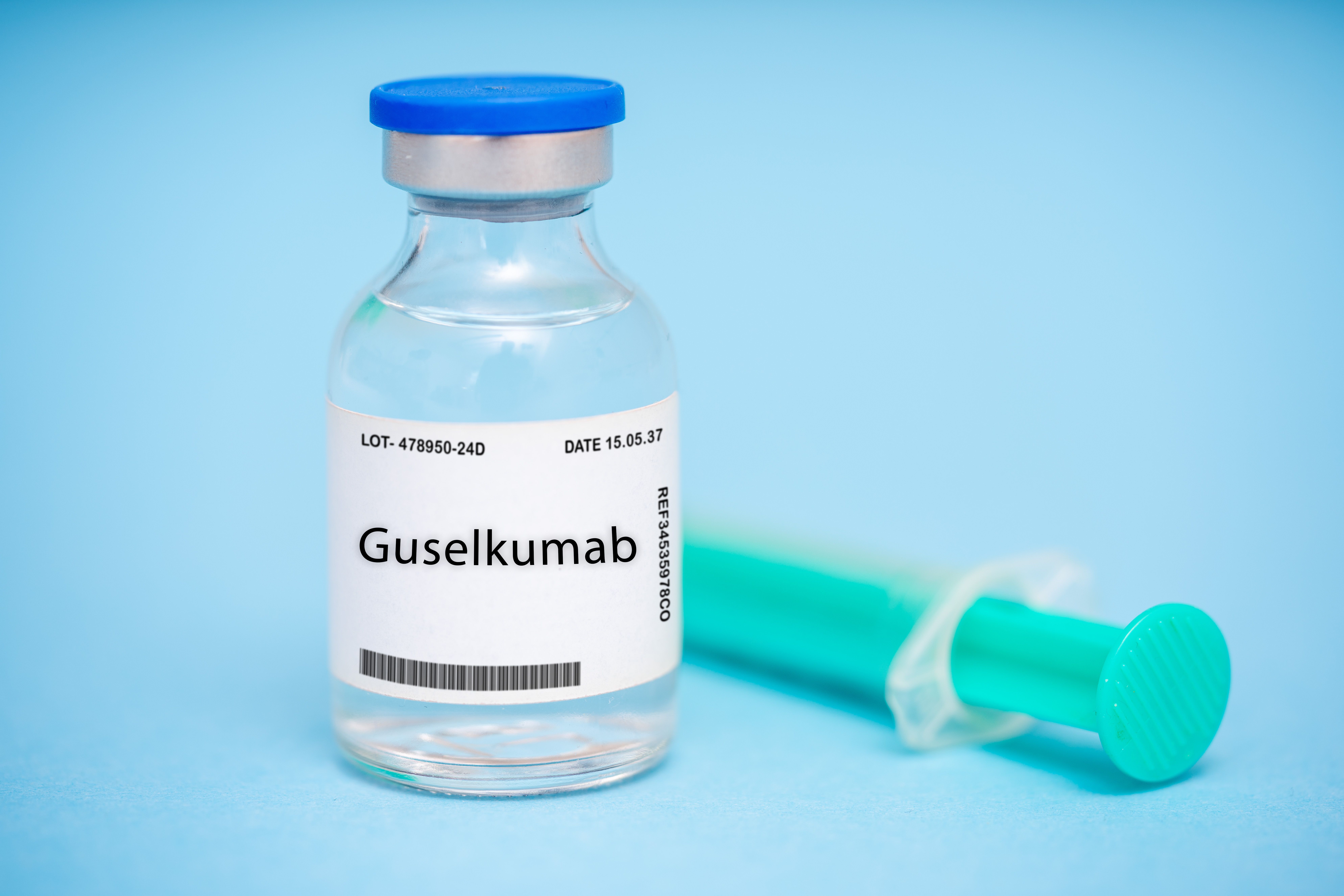News
Article
Real-World Study Confirms Efficacy of Venetoclax Alone, After BTKi Therapy in CLL
Author(s):
Researchers found that venetoclax, either alone or post treatment with a Bruton tyrosine kinase inhibitor (BTKi), was safe and effective for patients with chronic lymphocytic leukemia (CLL).
Cancer treatment, doctor supporting patient | Image credit: catalin - stock.adobe.com

Venetoclax-based therapy is an effective treatment option for both patients with chronic lymphocytic leukemia/small lymphocytic leukemia (CLL/SLL) who are treatment naïve or who have previously undergone therapy with a covalent Bruton tyrosine kinase inhibitor (cBTKi), according to a study shared at the American Society of Hematology Annual Meeting & Exposition.
The multicenter, real-world analysis demonstrated that venetoclax-based therapy post cBTKi is associated with durable remission. Venetoclax has consistently shown effectiveness and manageable adverse effects in individuals with CLL/SLL, whether they have a new diagnosis or have experienced relapse or refractory conditions. Nevertheless, there is limited evidence regarding the use of venetoclax in patients who have undergone prior treatment with BTK inhibitors.
The CLL Collaborative Study of Real-World Evidence (CORE) was a retrospective international observational study involving 23 centers. It focused on adult patients with diagnosed CLL/SLL who had received a venetoclax-based regimen after discontinuing a cBTKi-based regimen.
Overall response rate (ORR) was calculated based on complete response (CR) or partial response (PR) among patients with documented responses. Time to next treatment or death (TTNT-D) was measured from the date of venetoclax initiation to change of treatment/death, while progression-free survival (PFS) was measured from the same date to disease progression/death. The outcomes were reported for the overall population and stratified by the line of therapy (first line to second line [1L→2L] and second line to third line [2L→3L]), as well as by the presence or absence of chemotherapy/chemoimmunotherapy exposure prior to cBTKi for 2L→3L.
Of the 2020 patients included in CORE, 1287 (63.7%) had received a cBTKi-based regimen in at least 1 line of therapy. Among them, 184 patients (14.3%) discontinued cBTKi, with intolerance accounting for 83 (45.1%) and progression for 78 (42.4%). These patients then initiated venetoclax-based therapy, with 115 on venetoclax monotherapy and 69 on venetoclax plus rituximab or obinutuzumab.
At the initiation of venetoclax, the mean age was 68.6 years, 69.0% were male patients, and 31.0% had Medicare. Unmutated IGHV was observed in 67.2% of tested patients, and 25.7% had 17p deletion or TP53 mutation. The average follow-up time from the initiation of venetoclax therapy was 19.6 months.
For the 127 patients (69.0%) with a documented response, the ORR was 78.0% (CR, 43.3%; PR, 34.6%). The median TTNT-D for these patients was 39.5 months, with 12- and 18-month rates of 82.3% and 72.4%, respectively. The median PFS was 43.2 months, and the 12- and 18-month PFS rates were 82.8% and 75.1%, respectively.
Among patients who initiated venetoclax-based therapy post cBTKi as 1L→2L (n = 65), the ORR was 84.1% (CR, 54.5%; PR, 29.5%). The median TTNT-D for these patients was “not reached," but the 12- and 18-month rates were 85.0% and 73.9%, respectively. The median PFS was 43.2 months, and the 12- and 18-month rates were 86.4% and 81.8%, respectively.
Of the patients who initiated venetoclax-based therapy post cBTKi as 2L→3L (n = 67), the ORR was 78.3% (CR, 41.3%; PR, 37.0%). The median TTNT-D for these patients was 44.2 months, with 12- and 18-month rates of 83.1% and 76.5%, respectively. The median PFS for these patients was 44.1 months, and the 12- and 18-month rates were 85.2% and 80.4%, respectively. The results for ORR, TTNT-D, and PFS were also similar for those with and without exposure to chemotherapy or chemoimmunotherapy prior to cBTKi.
The authors concluded, ”These results are especially timely as the CLL treatment paradigm continues to evolve with multiple treatment options available, providing clinicians with valuable evidence to inform modern clinical practice. Further analysis of this study with larger cohorts and longer follow-up time will be undertaken as part of future work to grow this body of evidence.”
Reference
Ghosh N, Lamanna N, Eyre TA, et al. Treatment effectiveness with venetoclax-based therapy after Bruton tyrosine kinase inhibitors in chronic lymphocytic leukemia: an international real-world study. Presented at: 65th American Society of Hematology Annual Meeting and Exposition; December 9-12, 2023; San Diego, CA. Abstract 1908. https://ash.confex.com/ash/2023/webprogram/Paper179198.html




